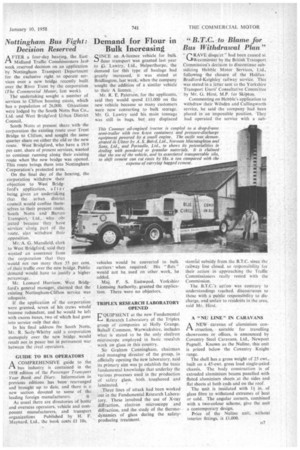Demand for Flour in Bulk Increasing
Page 47

If you've noticed an error in this article please click here to report it so we can fix it.
SINCE an A-licence vehicle for bulk flour transport was granted last year
to Lawtry, Ltd., Helperthorpe, the demand for this type of haulage had greatly increased, it was stated at Bridlington, last week, when the company sought the addition of a similar vehicle to their A licence.
Mr. R. E. PatersOn, for the applicants, said they would spend £11,000 on the new vehicle because so many customers were now converting to bulk storage. Mr. G. Lawtry said his main tonnage was still in bags, but any displaced vehicles would be converted to bulk
carriers' when required. His " flats" would not be used on other work, he added.
Maj. F. S. Eastwood, Yorkshire Licensing Authority, granted the application. There were no objectors.
TRIPLEX RESEARCH LABORATORY OPENED
EQUIPMENT at the new Fundamental Research Laboratory of the Triplex group of companies at Holly Grange, Balsall Common, Warwickshire, includes what is stated to be the only eleetron microscope employed in basic resea'rch work on glass in this country.
Sir Graham Cunningham. chairman and managing director of the group, in officially opening the new laboratory, said its primary aim was to establish the basic fundamental knowledge that underlay the various processes used in the production of safety glass, both toughened and lamina ted.
Three lines of attack had been worked out in the Fundamental Research Laboratory. These involved the use of X-ray diffraction, electron microscopy and diffraction, and the study of the thermodynamics of glass during the safetyproducing treatment.
















































































































